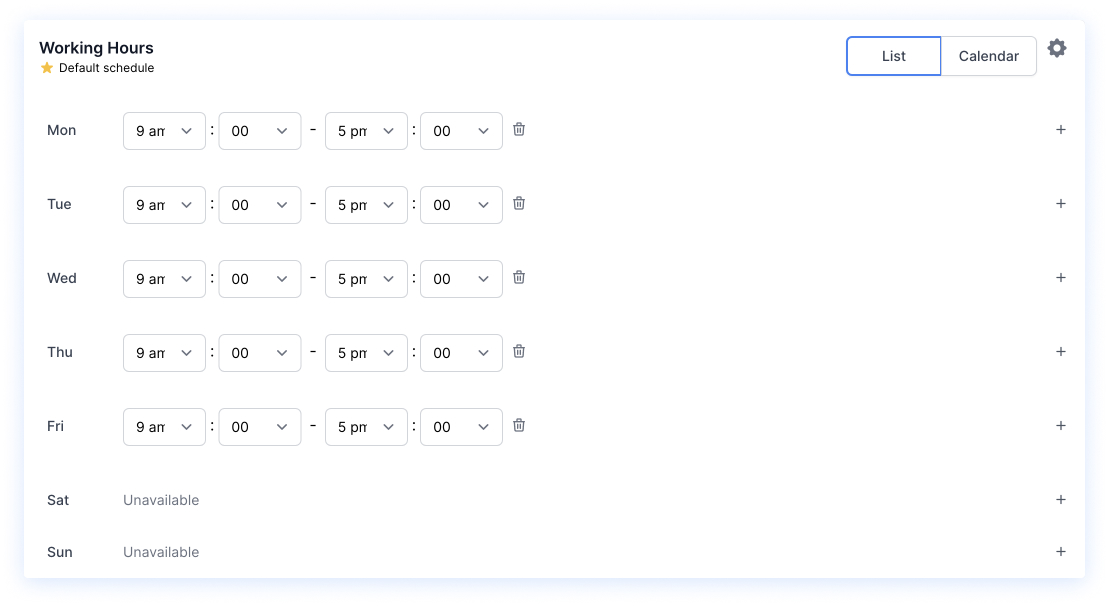Scheduling is something that can get exponentially more difficult the larger your organization gets. No matter what industry you’re in, scheduling can be an incredibly influential factor in whether that business succeeds or fails.
One of the ways that managers and business owners are able to mitigate some of the potential drawbacks that come with delegating their scheduling tasks to human scheduling agents, is by implementing a solid automatic scheduling platform.
Automated scheduling software is one of the most effective ways that businesses that rely on appointment setting can increase the efficiency and ease of day-to-day operations.
What is Automated Scheduling?
Automated scheduling is an automatic process that takes existing data from your business operations, and integrates additional parameters that the user can define. Then, an artificial intelligence framework takes over and creates the optimal scheduling arrangement.
Not only can a single click easily manage appointment tasks and booking abilities, but it can also lead to more complex tasks like wide-ranging reschedules or automatic canceling, rescheduling and more.
Since automated scheduling is managed by software, it can easily look past extraneous data and find the best scheduling solution for your needs. The most common type of automatic scheduling is for appointment setting, though similar software can be used to determine the best scheduling solution for staff and employees, from small businesses to larger corporations with multiple locations.
How Does Automated Scheduling Work?
Automated scheduling for appointment scheduling, for instance, consultants or doctor’s offices, can mean far less human intervention in your scheduling process. This in turn can directly translate to fewer errors. It is able to do this with simple AI management and user-defined parameters for scheduling and general operation.
To start off, you’ll tell the software what the daily hours of operation are at the business. Then you can add information such as staff levels and scheduling, as well as details about different types of appointments that will require varying amounts of time to complete. This is ideal for businesses like medical practices and mechanics, or even hair salons, where preventing overbooking is essential, as is time management and staff efficiency.

When prompted, the software will determine the optimal scheduled date and time for a particular appointment or meeting and will take the liberty of scheduling the appointment automatically. However, the software will then ask the customer or client if that date and time are acceptable, and will give them the chance to reschedule for other predetermined options provided by the system.
Automated scheduling software can also ensure that contact is maintained with customers who have appointments scheduled, and can help remind them about the appointments automatically. This can be done with things like automated email reminders and push notifications. This helps your business maintain efficiency, full schedules, and more revenue. It also functions to drastically reduce things like unexpected reschedules and cancellations, as well as no-shows. This results in less of your staff’s time wasted and a smoother operation overall.
Automated scheduling software works in a very similar way when used to manage employee schedules and things like company meeting attendance compliance. You will first define the parameters of your business such as office hours, out-of-office hours, lunches, breaks, and so on. Then you’ll need to tell the software about the event that you want to schedule, whether it’s a workday, an appointment, a staff meeting, performance coaching, or whatever you need at that moment.
The software will then comb through all of the different variables, and test various solutions before coming up with the most effective one. In the backend of the software, scheduling software often uses a scoring system to assign numerical values to things like schedule conflicts and staff unavailability. These scores are aggregated and generally speaking, the solution with the lowest number of conflicts is often the optimal one.
Depending on how you leverage your automated scheduling software, you can get a wide range of functionality out of it. In many cases, you can not only manage appointments, meetings, and events like training and compliance, but you can improve the customer experience as well.
Many businesses that have a relatively high demand will have customers scheduled out relatively far, or may even have a waitlist for service. Automated scheduling software can help fill idle time gaps from canceled or rescheduled events by automatically communicating with customers facing delays and moving them up in the schedule if they’re available.
How Can You Leverage Automated Scheduling Using Taggg?

Taggg is a unique automated scheduling solution that allows you to manage appointments and schedules with ease. For example, Taggg provides one of the easiest ways to plan and schedule meetings across multiple departments and with dozens of attendees. All you need to do is define your business’s meeting parameters, and then designate the participants in the Taggg interface. This can be done in several ways, but the most popular and easy way is simply by email.
The system will then automatically find the optimal meeting time and date for all participants via their Google/Outlook calendars, schedule it, and update their schedules as needed. This keeps everyone on the same page, and updates or corrections are implemented instantly across all participants. The days of recalling a meeting request in the hopes that you got it before everyone added it to their calendar manually are over. Everything is taken care of by Taggg in just a few clicks.
In addition to finding the optimal time for a meeting, Taggg can also find the earliest possible time slot that the software determines everyone is able to attend. This is great for things like safety or compliance meetings, where you need to schedule them with more urgency than other meetings.
Since the calendar updates and event additions are managed automatically by Taggg, you never have to worry about someone not getting the email or forgetting to add the event to their schedule manually. Taggg handles the event scheduling, blocks out time on everyone’s schedule for the item, and instantly updates everyone involved.
Try Taggg for yourself, and see how automated scheduling works for you. Get started for free!

